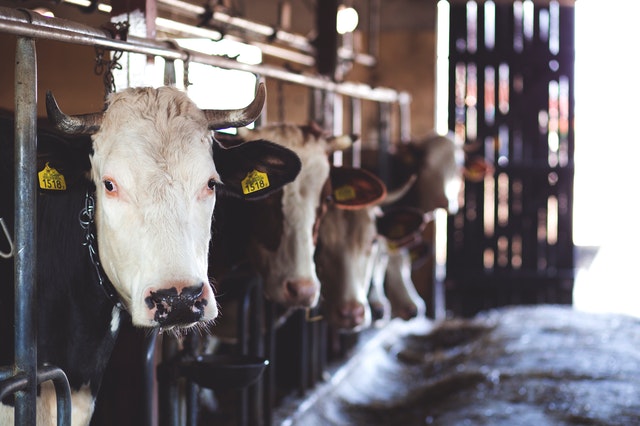
Brian Moseti
Six years ago, Solomon Mulema was preparing to shut down his dairy farm in Vihiga County, after unsuccessfully trying to turn a profit following consistently low yields.
Mulema, who had taken up dairy farming after retiring as a school teacher, spent most of his pension purchasing six expensive cows, some costing up to KSh200,000 each. He also constructed a modern cattle shed and invested more money in feed purchases, veterinary services and hiring farmhands.
Yet five years later, he was running into losses and had fallen into crippling debt, which left him pondering terminating the venture.
It was while he was considering his next move that he took time to attend the Agricultural Society of Kenya (ASK) show in neighbouring Kisumu, where he met trainers from the Israeli Dairy School, who guided him back on track.
RELATED CONTENT: Western Kenya dairy farmers bank on brewery waste to save Sh50, 000 animal feed costs a month
"Through my interaction with the trainers, I learnt where I had gone wrong and immediately embarked on changes. For example, I had gone into dairy farming with the notion that expensive cows produce the most milk and I spent a lot of money sourcing cows from suppliers, who claimed to import from areas like Manilla, in the Philippines," Mulema said.
Some of the animals he bought looked like heavy producers, but failed to reach one third of the advertised 30 liters per day. What Mulema did not know was that it was easy for crafty business people to make unproductive animals look attractive using steroid hormones and other drugs.
"For a long time, I knew that cows with big udders yielded the most milk and that was one of the criteria I used when building my herd. Little did I know that the industry is full of cons," he said.
He was still lucky to have bought a few animals from reputable breeders, but they too failed to reach optimum production levels due to poor management. His failure was a stellar confirmation of the results of a 2015 study which found that cows on smallholder dairy farms (SDF) in developing countries such as Kenya typically produce volumes of milk that are well below their genetic potential.
The publishers of the report hosted on the PubMed journal, determined the reasons for this low milk production as limited use of best management practices, such as suboptimal nutritional management. Mulema's failure was on diet as he focussed more on giving his animals high protein feeds and water, while disregarding the need for dry matter.
"I concentrated on commercial feeds, like dairy meal, which I had presumed to boost yields and did not properly invest in evaluating the quality of plant-based feeds. Now I am a lot wiser and understand the importance of a proper balance between hay, processed feed and water in the production of milk," he said.
The continuous training he got through contact with the Israeli Dairy School and interaction with local dairy farming professionals has helped Mulema turn his fortunes around and he is now on the path to becoming a respected farmer. With his herd now at a steady 12 and an average production of 18 litres per cow, Mulema shares the following tips with upcoming dairy farmers.
Starting the herd
The best heifers and cows to start a dairy farming enterprise are those that are quiet in temperament and come from a line of great producers. As a general rule, a good dairy should have a triangular shape, straight topline of the body, a small, refined head, a large udder with pronounced milk veins and well-spaced teats. For beginner farmers, it is advisable to purchase animals that have already calved before and have proper records of production and management. Productive breeds like Freisians are desirable, and heifers should weigh 270Kgs and calve at around 450Kgs, as recommended by the Food and Agricultural Organization (FAO). Of even more importance is to buy your starter animals from well-respected agencies and farms, while insisting on proper animal documentation.
Feed selection
More than three quarters of a cow's milk production is determined by how you feed them. Zero grazing is recommended for dairy cows as this makes it easy to monitor the amount and type of feed the animals consume. For those with enough land, it is advisable to cultivate hybrid varieties of elephant grass, which has perennial characteristics and can provide fodder all year round. FAO also recommends other grasses such as guinea grass, Guatemala grass, leucaena and some wild shrub legume varieties like as Adananthera sp, and Albizia sps. A balance of grain, silage and feed supplement should be maintained with each meal and care should be taken to avoid overfeeding, which would lead to fattening instead of increased milk. With proper record keeping, farmers can determine a balance between the types and quantities of feed given to cows for optimum production.
Hygiene and comfort
Cows are most productive when they are not stressed. It is, therefore, important to ensure that the sheds are designed to give optimum shade against the elements. In addition, cleanliness should not be underestimated, with the cowsheds cleaned regularly. Cow mattresses, which are now readily available at agrovet shops should be provided at night to allow the animals to rest without suffering injuries or discomfort from hard floors. Cows should also be observed regularly and those that deviate from their usual behaviours inspected by veterinary doctors to initiate treatment in case of illnesses.
RELATED CONTENT: Fortune beckons for Kirinyaga herbs farmer after abandoning dairy
Progressive learning
As a parting shot, Mulema recommends that farmers invest in training by attending dairy farm management sessions with reputable agencies such as the Kenya Agricultural & Livestock Research Organization (KALRO) and the Israeli Dairy School.
For dairy farming literature, contact,Dairy Research Institute -KALRO: +254 722206986/722206988. Airtel: +254 733-333-223. Fibre Lines: 0709 104000-60 (Safaricom) - 0730 707000-60 (Airtel).Israeli Dairy School: +972544865282, email: info@dairyschool.co.il
















Comments (0)
Comments powered by CComment